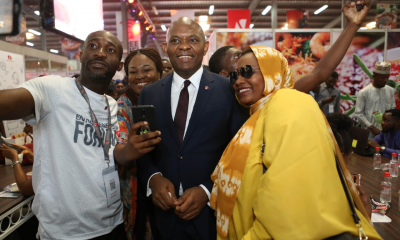Energy
Cameroon: Three power plants financed by the African Development Bank to reduce power cuts

Image credit: African Development Bank
For many years, Cameroon’s national electricity supply has been notoriously unreliable and subject to power cuts. The last significant electric system outage, which lasted eight hours, occurred last March and affected several of the country’s regions (the Far North, North, Littoral, Adamaoua, South and Centre regions).
However, three projects financed by the African Development Bank for $121.4 million in 2010-2011 are at last starting to provide long-suffering Cameroonians with much more reliable electricity.
Completion of work on transport lines, line maintenance and especially the replacement of wooden electricity transport poles with concrete poles are all part of the system improvements, whose goal is to increase the quality and reliability of public access to electricity.
The Lom Panga storage reservoir project is complete, but the dam’s generating plant is still under construction. In the meantime, two other power plants, Kribi and Dibamba, have begun working to strengthen Cameroon’s generating capacity.
In November 2011, the African Development Bank awarded $62.9 million for the construction of Lom-Pangar, the hydroelectric generation’s ‘lungs’ in the country’s East region. The project included the construction of a reservoir (6 billion cubic meters of water retained) for regulating the Sanaga’s flow and optimising generation during low water periods at the Song Loulou plant (335 MW) and the Edea plant (224 MW). The production from these two plants has grown from 450 MW in 2011 to 729 MW now.
A 30 MW hydroelectric generating plant is under construction at the base of the dam. It will be linked to the Bertoua thermal plant by a 105 km 90kV line that should start to work in May 2021 following the installation of an evacuation station and the construction of its four turbines. Lom-Pangar will provide electricity to 150 locations in the region and will significantly reduce power cuts in the area.
“The Lom-Pangar dam will help save water in other reservoirs,” said Theodore Nsangou, the General Director of the Electricity Development Corporation (EDC), in an interview with a government publication in March 2018.
The 216 MW capacity Kribi gas-fired generating plant began to work in 2013 after receiving $32.8 million from the African Development Bank in July 2011 for an expansion project. Its production goal is 330 MW. Currently, the power plant has a 100 km 225 kV transport line connecting it with the Magombe substation in the Edea region in the country’s South region. The plant operates with natural gas (with light fuel oil as emergency backup) from the Sagana South offshore gas field.
During the dry season, the Kribi plant and its nine simple cycle gas turbines are truly the system’s “oxygen”, maintaining the country’s energy flow, particularly to the South’s interconnected system, which receives its electricity from Kribi.
The Kribi gas-fired generating plant and the Dibamba generating plant provide access to electricity for close to half of Cameroon’s population.
The Dibamba heavy fuel oil generating plant was also designed to meet the serious problem of power cuts during the dry season. It was the first of the three plants to receive financial support from the African Development Bank of $25.6 million in April 2010. Built to mitigate the country’s shortage of electricity, high demand quickly outpaced its capacity the day after it began operations.
Located in the outskirts of Douala, Cameroon’s second largest city, Dibamba is an 86 MW thermal generating plant with a 2 km 90 kV transport line linked to the network serving the most remote and densely populated areas in the country’s West region.
With an estimated 23,000 MW hydroelectric production capacity, Cameroon has the second largest hydroelectric potential in Africa and the 18th largest worldwide. The country plans to complete the development of its hydroelectric industries by 2035. Construction of the Nachtigal hydroelectric generating plan began in 2019 and will be complete in about five years, with an estimated generating capacity of 420 MW.
The African Development Bank has awarded a funding package of $154.8 million for the completion of this generating plant. Other development partners, such as the World Bank, the European Investment Bank and Proparco, are also involved.
Energy
United States (U.S.) Political Will, African Reforms Signal New Era for Energy Investment
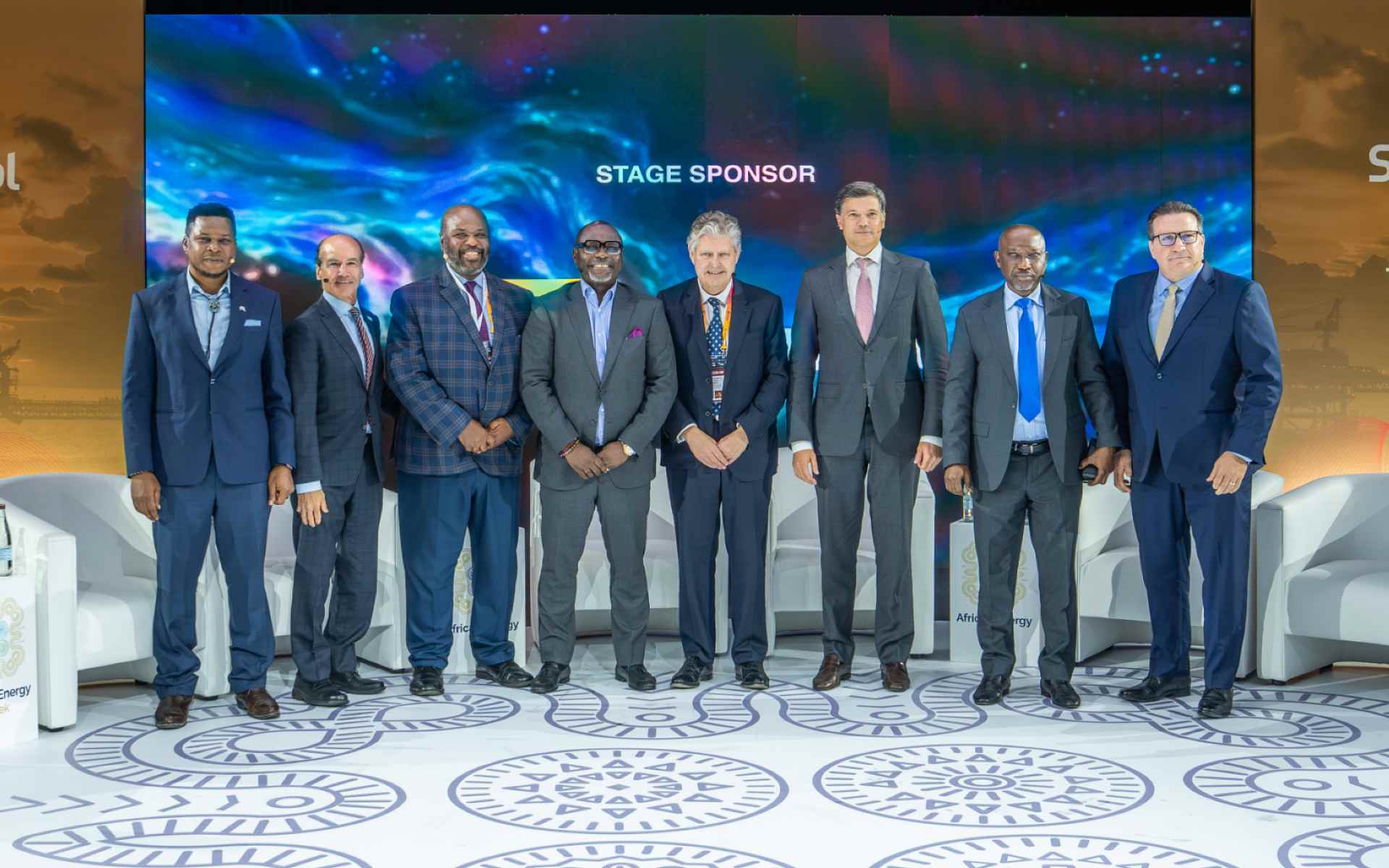
U.S. political momentum and African regulatory reforms are converging to create what leaders at African Energy Week 2025 described as a strategic opening for U.S. investment in Africa’s energy sector.
“This administration is unleashing opportunities,” said Mark Menezes, President & CEO of the U.S. Energy Association, pointing to the lifting of restrictions on the Export-Import Bank and other U.S. financing agencies. “Africa is resource-rich, and we see long-term partnerships not just for oil and gas but also for critical minerals.”
Nigeria’s Minister of State for Petroleum Resources (Gas), Ekperikpe Ekpo, highlighted the Petroleum Industry Act and recent Executive Orders as landmark reforms designed to streamline Nigeria’s regulation, making the market more attractive to U.S. capital. “We are reducing bottlenecks and contracting timelines, as well as improving fiscal terms,” he said. Ekpo also pointed to the creation of the Midstream and Downstream Gas Infrastructure Fund, established to boost investment in gas infrastructure by de-risking projects and drawing in private investors.
“Difficult issues around foreign exchange, repatriation of profits, regulatory uncertainty – those are being addressed,” said Jude Kearney, Managing Partner of Asafo & Co., commenting on the evolution of investor confidence in Africa. “African governments have also increased their capacity to do PPPs.”
As stakes rise, panelists cautioned that good policy itself does not guarantee results. Andrew Inglis, CEO of Kosmos Energy, contrasted Ghana’s Jubilee project, which went from license award to production in six years, with today’s average of 20 years. “It takes more than just regulatory clarity – it takes drive from the top to get things done,” he said. “As U.S. companies, we bring finance, technology and deepwater expertise. It’s great to be supported now by an administration that believes in our industry.”
“We’re seeing a new era not only of energy dominance, but of African energy opportunity,” said NJ Ayuk, Executive Chairman of the African Energy Chamber. “But we need to back it with finance and remove the bottlenecks. There’s so much more Americans can do. We have a moment right now – seize it.”
Ayuk added that African governments also have a role to play in reinforcing investor confidence. “We need to see free markets, limited government and personal responsibility. Money flows where it’s welcome. Our job in 2026 is to make Africa the most attractive destination for oil and gas investment. It also takes African ministers speaking up – when they do, it strengthens companies seeking capital to invest and expand across the continent.”
Kola Karim, Group CEO of Shoreline Energy, argued that the real value U.S. companies bring is in solving infrastructure challenges. “The oil is there,” he said. “The problem is facilities, and that means financing. That’s where U.S. companies, with technology and support from DFC and EXIM, can add real value. If you can manufacture onshore in America, you can export into our markets and help us deliver faster, better projects.”
From the U.S. government side, Andrew Rapp, Senior Adviser at the U.S. Department of Energy, affirmed that Washington sees Africa’s energy future as integral to global prosperity. “Energy addition is a priority for the DOE, and nowhere can it be more impactful than here in Africa. This is our goal as an agency and it has support from the highest levels of the administration.”
Energy
Wale Tinubu, Group Chief Executive, Oando PLC, Receives Lifetime Achievement Award at African Energy Week 2025
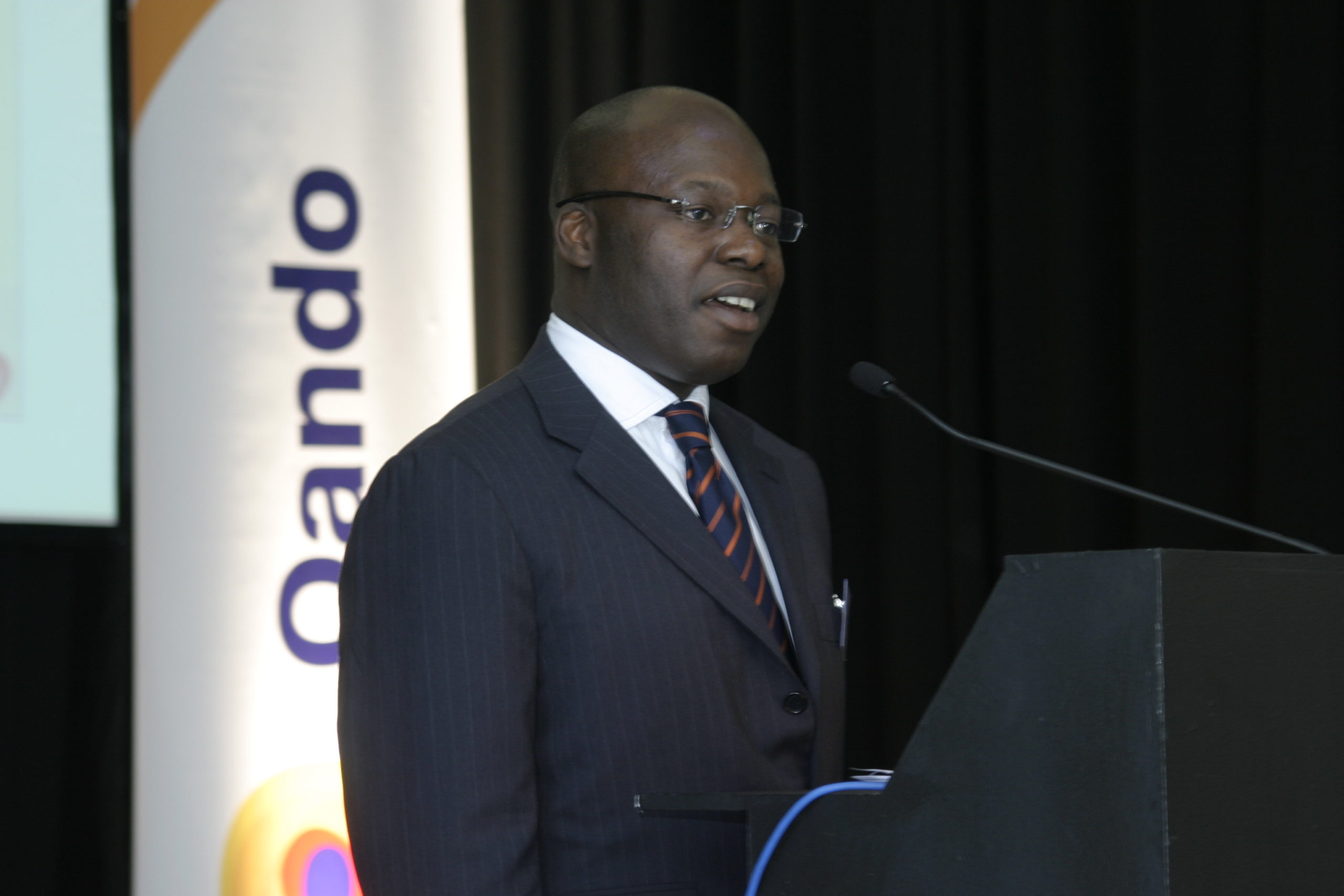
Wale Tinubu CON, Group Chief Executive, Oando, has been awarded the prestigious Lifetime Achievement Award at African Energy Week (AEW) 2025, in recognition of his unwavering commitment to building Oando into one of Africa’s foremost integrated energy companies.
The award, one of the most coveted accolades at AEW, is presented annually to industry leaders whose careers have demonstrated extraordinary vision, resilience, and a lasting impact on Africa’s energy landscape. Past recipients have included trailblazers such as Professor Benedict Okey Oramah GCON, President of Afreximbank, who received the Mohammed S. Barkindo Lifetime Achievement Award in 2024; H.E. Hage Geingob, Former President of Namibia, and H.E. Macky Sall, Former President of Senegal, awarded in 2023; and H.E. Bruno Jean Richard Itoua, Minister of Hydrocarbons, Republic of Congo, in 2022.
In conferring the award, the African Energy Chamber cited Tinubu’s “dedication to advancing Africa’s energy security, his bold leadership in navigating Oando through periods of uncertainty and transformation, and his pivotal role in demonstrating the power of indigenous companies in driving industrial growth and energy sovereignty across the continent.”
Throughout his career, Tinubu has been a steadfast champion of Africa, charting its own destiny by harnessing its abundant resources for the benefit of its people. A firm believer that anyone can achieve greatness with vision, determination, and the right team around them, he has led Oando from its modest beginnings as a local downstream operator into a multinational integrated energy player with a robust portfolio spanning exploration and production, power, and renewables. His leadership has not only positioned Oando as a continental leader but also symbolized African ambition, ingenuity, and resilience.
The Lifetime Achievement Award is widely regarded as a benchmark of excellence at AEW, reserved for leaders whose contributions have left an indelible mark on Africa’s energy sector. It recognizes individuals whose sustained, more than decade-long careers embody remarkable achievements and enduring contributions to the oil, gas, and energy industries. Tinubu’s recognition was a fitting and well-deserved tribute to a leader who has consistently inspired others to believe in the promise of Africa and the power of its people.
Energy
NJ Ayuk on Five Years of Powering Africa’s Energy
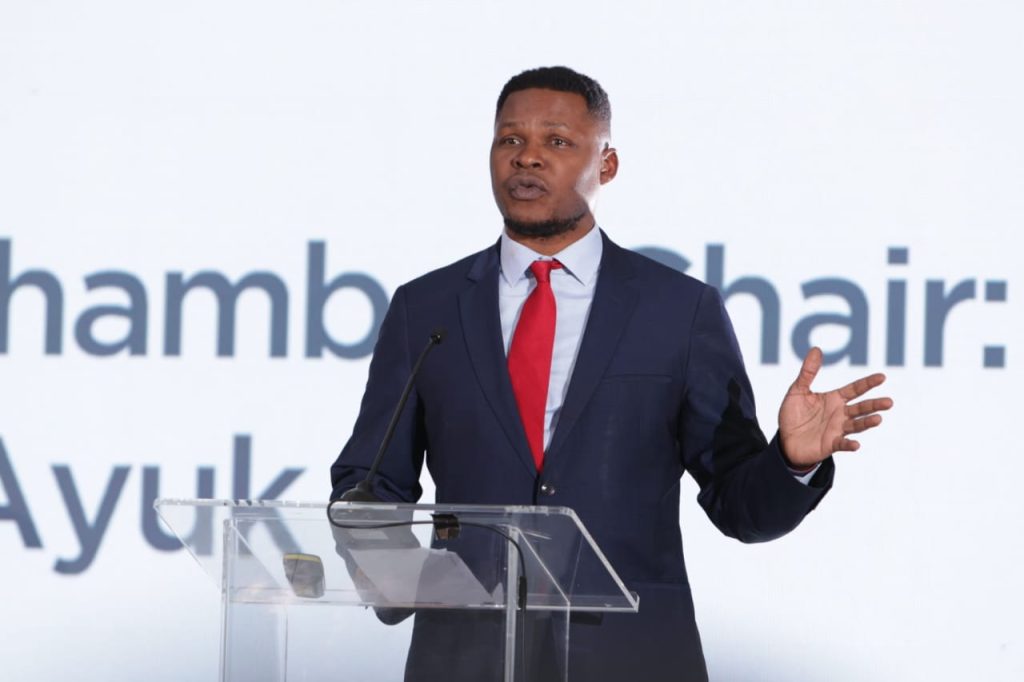
African Energy Week (AEW) was born out of a need to bring the discussion about Africa’s energy future back to the continent
Five years may seem a short time in the lifespan of an industry, but in the African energy space, it has been nothing short of a revolution. At the heart of that transformation stands NJ Ayuk, Executive Chairman of the African Energy Chamber, a figure who has become synonymous with unapologetic advocacy for African-led solutions, deal-making at scale, and an unrelenting drive to end energy poverty on the continent. His voice carries weight not just in Africa but across global boardrooms, where he has positioned Africa not as a bystander in the energy transition but as a decisive player.
Against this backdrop of ambition, grit, and unprecedented growth, Pan African Visions recently had a Q&A with NJ Ayuk, a conversation that captured both the triumphs of the African Energy Week (AEW) journey and the sharper edges of Africa’s energy reality. More than just a conference, AEW has grown into what Ayuk describes as a “movement,” one that in just five years has turned Cape Town into the epicenter of global energy dialogue.
In the exchange that follows, Ayuk speaks candidly about the birth of AEW, its achievements, the hurdles of perception, and the bold steps that still lie ahead. His words are not rehearsed slogans; they are infused with the lived intensity of someone who has fought to bring Africa’s energy story back to African soil—and won.
The fifth anniversary of this incredible conference fills me and the AEC team with pride as well as clarity of purpose. From our 2021 debut of 1,700 delegates, ministers, global executives, and financiers, we’ve evolved into the continent’s premier energy investment platform, with just short of 7,000 delegates attending in 2024, with 26 official delegations and 27 ministries. Celebrating this symbolic fifth year, the mood is electric – we’ve catalyzed multi-billion-dollar deals, shaped policy, and intensified regional collaboration. With renewed confidence, I can wholeheartedly say, AEW is the heartbeat of Africa’s energy ambitions. We feel fortitude, optimism, and an unwavering commitment to deliver deals that will make energy poverty in Africa history by 2030.
AEW was born out of a need to bring the discussion about Africa’s energy future back to the continent. For so long, we have seen major energy events discuss key topics about the continent in international locations. From Houston to Dubai to London. And during COVID-19, when it was even more imperative to protect Africa’s interests, we saw major conferences abandon the continent for Dubai. This not only took the discussion about Africa away from the continent but also took all of the economic benefits of hosting a conference away from the community as well. Africa deserves to not only be part of those discussions but drive them. AEW proved that the continent is capable of hosting international energy conferences.
In five years, AEW has delivered transformative outcomes: facilitating multi-billion-dollar deals, institutionalizing platforms like the African Farmout Forum and Deal Room, and shaping energy policy dialogue across Africa. We launched initiatives such as the African Green Energy initiative and the Just Energy Transition Concert, amplifying green energy investment and inclusive engagement. Strategic financing commitments have flowed – like Afreximbank channelling over $120 million in 2024, and impactful cross-border projects like hydrogen exploration in The Gambia and gas facility funding in Nigeria. We’ve built the continent’s prime energy forum – where deals happen, and barriers fall.
When we launched AEW in 2021, our vision was ambitious. Seeing dozens of ministers, presidents, multinationals, financiers, and international institutions converge annually exceeds initial expectations. What started as a bold conference has matured into a movement. We now convene the full spectrum – governments, national oil companies, investors, and technology providers – powering tangible capital mobilization and project acceleration. Today, the AEW ecosystem is broader, deeper, and more impactful than we dared to dream.
Behind closed doors, ministers and heads of state recognize both urgency and opportunity – their energy stakes are existential, tied to development, jobs, and security. We hear a unified call for enabling regulation, transparency, and finance. Many affirm meaningful political will: Nigeria’s Petroleum Industry Act, South Africa’s new petroleum company, the Republic of Congo’s Gas Master Plan. Each underscores commitment to reform and sector growth. That political will is real and rising, though implementation must accelerate. At AEW, declarations are becoming actionable through partnerships, policy alignment, and capital flow.
Expect AEW 2025 to raise the bar. Highlights include expanded Big-5 Premium Content Stages, African Farmout Forum, and Deal Room. We’re introducing high-impact elements: the G20 Energy Leaders Roundtable, OPEC-Africa Roundtable, COP30 positioning sessions, and country spotlight forums for nations like Senegal, Equatorial Guinea, Namibia, and more. Pre-conference workshops, technical hubs, fireside chats, African Energy Awards, and the Just Energy Transition Concert also return, fueling innovation, recognition, and high-value networking. AEW 2025 delivers new formats and cutting-edge content.
Financing momentum is accelerating, with Africa’s oil and gas capital expenditure jumping to $47 billion in 2024 – a 23% year-on-year increase. Institutional elements like the African Energy Bank, launching with $5 billion this year, signal a new African-led financing era. Cross-border collaboration also strengthens – from joint LNG developments to regional pipeline planning and farm-out partnerships across the continent. While challenges persist, capital and cooperation are surging – proof that Africa is writing its own energy narratives.
Our global mission is shifting perception. Africa is not an energy laggard but a frontier of high-growth and resilient opportunity. Investors now see us not as a risk, but as full-sized players in oil, gas, and renewables. However, the myths remain: that Africa lacks governance, scale, and legitimacy. AEW counters that. Through real deals, ministerial validation, and deliverables. That lens is changing. We are now positioned as energy champions, not bystanders. But we still combat outdated tropes about instability and poor capacity – and events like AEW are the antidote.
We hope that Africa emerges as a global energy powerhouse, leveraging oil, gas, and renewables to power inclusive industrialization, growth, and energy justice. Financing, policymaking, and implementation must not falter. AEW’s future is to deepen impact, expanding satellite forums, reinforcing policy-to-project pipelines, and embedding digital integration and sustainability at every stage. We aim to revolve AEW into a year-round engine for capital flow, institutional building, and continuous energy transformation.
-
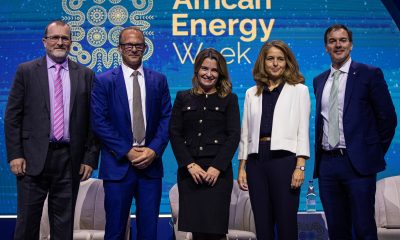
 Oil and Gas3 days ago
Oil and Gas3 days agoTotalEnergies, Chevron Push for Faster Permits, Better Seismic Data in Africa
-
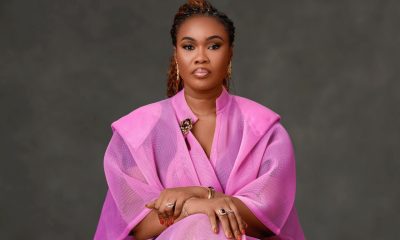
 Afripreneur18 hours ago
Afripreneur18 hours agoRevolutionizing Cross-Border Payments in Africa: An Exclusive Interview with Onyinye Olisah
-
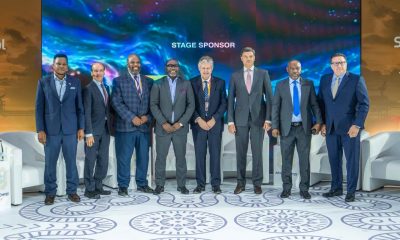
 Energy3 days ago
Energy3 days agoUnited States (U.S.) Political Will, African Reforms Signal New Era for Energy Investment








